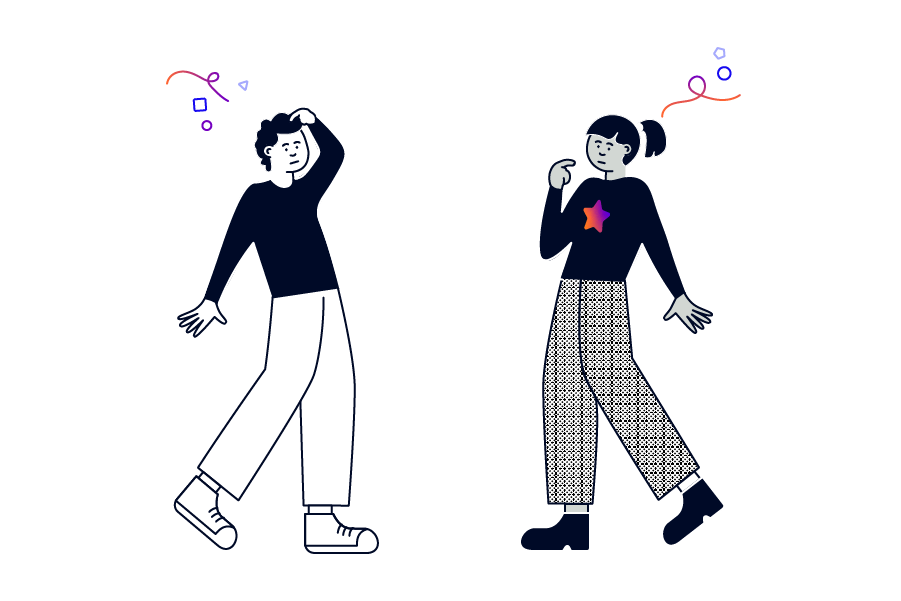
Elena Francis
Published on 13 March 2024
Five top tips for managing a multi-generational workplace
With four generations in the workplace, Dr. Eliza Filby recommends her five top tips for managing a multi-generational workplace.
The generation gap feels particularly large these days, strengthened by economics, politics, technology, and the impact of hybrid working. The traditional workplace model of trickle-down knowledge is being disrupted; we have young people armed with tech skills they need to teach their elders, and older workers with essential soft skills that younger colleagues need to master. We also have an ageing workforce that needs to generate the right skills to stay apace with an evolving workplace.
We all have something to learn from each other, which is the easiest way of ridding workplaces of the prevailing and corrosive culture of age stereotypes and ageism. Dr. Eliza Filby, Historian of Generational Evolution, shares her top five tips for managing an intergenerational workforce.
1. Understand generational analysis
This is not about building stereotypes around certain age groups, but more about understanding how different generations tend to see work, tech, and culture. Baby Boomers, for example, are an exceptional generation, a product of unique post-war circumstances. Endowed with huge economic and political power, they’ve also experienced more traditional and linear progression through life than subsequent generations, as well as building assets.
Generation X witnessed huge technological change; they went from the Walkman to the Blackberry and have had to adapt to innovation ever since. Right now, they’re often sandwiched between two caring responsibilities—their children and their parents.
Millennials were guinea pigs for massive changes, including expanding university education and turbocharging the knowledge economy. Disrupted by the 2008 financial crisis and the rise of assets, they’ve experienced a delayed route into the traditional stages of adulthood and the blurring of work/life through the smartphone. They are also the first generation since the Baby Boomers, for whom wages alone cannot buy wealth and assets.
Generation Z: this 21st-century generation is made of true digital natives and the first cohort to be genuinely global. They suffered colossal disruption during the pandemic, but they’re also hyper-individualistic, the product of parental and educational systems that have given them a voice and encouraged them to use it. They are also fluid in their understanding of work, are estimated to have five different careers, and do not believe in one salary alone.
How can we educate, understand, and empathise with others who have lived in different times? How can we adjust our perspective to incorporate theirs? It is not about boxing them into generational categories but recognising there may be areas of difference and starting a conversation.

2. Open dialogue
We need to make the workplace more human. We need to make it more tolerant of differences. We need to open up the conversation.
I would advise anyone under 35 to ask anyone older the following three questions in the workplace:
- What was work like for you when you were my age?
- Can I observe you do that?
- Any advice on how I should handle that?
I would advise anyone over 35 to ask their younger colleagues the following three questions:
- What do you think?
- What do you need to know?
- Are you okay?
3. Reverse mentoring
Formalising a reverse mentoring scheme, where younger colleagues are matched with older ones, is one simple way you can foster intergenerational dialogue and learning. In fact, the evidence says that the bigger the age gap, the more rewarding and reciprocated the mentoring relationship. Aim to create an age gap larger than 12 years.
4. Skill-swapping
External learning programmes are great, but the best learning is generated internally within your multigenerational teams. I’ve worked with companies where they have deliberately introduced skill-swapping initiatives. The Baby Boomers help Generation Z learn telephone etiquette with clients while the Generation Zs teach the Baby Boomers the nature and importance of social media and being a public ambassador for your company on platforms. Shared knowledge and mutual learning flatline age hierarchies and breed mutual respect.
5. Internal interrogation
Open the conversation about how you can be more productive as a multigenerational business. Give all generations a say in these questions.
How is our generation gap playing out in daily team interactions—in language, perceptions, behaviours, and speaking up? Think about hybrid dynamics, communication, learning, and where ageism currently plays a role in our daily workplace. Where do we lack understanding of how younger and older team members (especially non-leaders) think and behave? Identify specific areas, interactions, and work where this is most apparent. How does it hinder client products and services, as well as worker integration and productivity?
What can we do to rectify it? Focus this discussion on what we can change within our own conduct, perceptions, and behaviours. How can we change our management style to be better educators, listeners, and carers? Think about how we can test these against other generations, and how we can become better at adjusting our lens to be more age-inclusive—better at listening but also sharing knowledge.
What can our organisation do at a policy level, from age-inclusive policies to eldercare?
